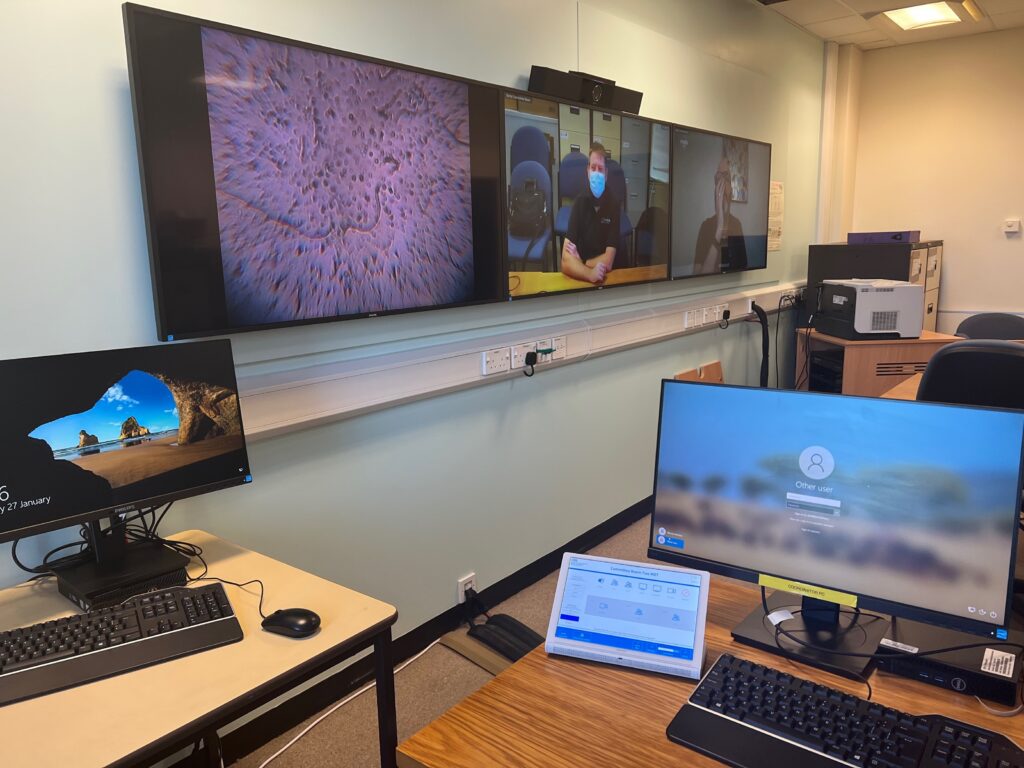By Rob Farnol, Account Manager
When working with the NHS, it’s vital we understand many things before we install to ensure we can meet requirements.
The first things when deploying AV into a meeting space are predictable – screen size, camera type, voice pickup etc. Those are the things we can do with little customer input – what’s more important is to know what the customer behaviours are in that space so that we can provide the right technology to match the use case.
NHS users of Audio Visual technology typically have the following demands:
- Easy-to-use
- Minimal interaction with the kit
- “One touch” to start a call
- See and be seen
- Hear and be heard
- Share content easily
- Read content easily
- To not notice the AV
And I think they have every right to call them demands – in 2024 technology should not present barriers to starting a meeting.

It’s easy to assume that these demands are simply born out of a wish to have something that’s easy to use but it’s much more than that. We work with many Cancer teams and have deployed a huge amount of MDT rooms, typically this requires a lot more than just a screen on the wall.
Cancer MDT meetings are typically attended by large numbers of people, whether they’re in the room or remote on video. Often, these meetings go on for hours and they discuss multiple patient cases back-to-back.
We need to bear in mind that during these meetings, vital decisions are made regarding treatment, next steps etc. It’s vital that when managing such high numbers of cases, the conversations need to be as efficient as possible.
Imagine not being able to hear clearly what’s being said due to poor microphones. Imagine having to shout or repeat yourself multiple times. Imagine not being able to see what is being shared on the screen. Imagine your equipment failing, resulting in an MDT session starting 20 minutes late, while IT people are running around frantically trying to get things to work.
Let’s say this is a regular occurrence, aside from the predictable frustrations of something not working there are real-world consequences.
We must be aware of the importance of outcomes – let’s be honest, at a basic level this can mean life or death.
What is the true cost of a failed meeting? There are of course the financial costs, but if a decision or treatment conversation is delayed, this could affect outcomes for patients.
I was lucky enough to host our stand at Digital Health Rewired in 2023 and had the pleasure of talking directly to some incredible NHS personnel, the conversations I had taught me a lot and helped me understand more as to what should be the priority when selling into the NHS and equally decisions made when purchasing should focus on true the ROI of improving outcomes.
My heart sank a few years ago when I saw an MDT room installed with a cheap consumer-grade TV, power cables plastered into the wall, a microphone hanging from the projector, a touch control panel littered with spelling mistakes that told the users to pick up the remote control to turn on the TV or projector. This particular trust had bought cheap and the supplier in question was no longer in business, subsequently they had very little budget available to fix things.
Collectively in our industry we need to appreciate that although at time budgets might be stretched, we should not let that influence what we sell to the detriment of the users in the room.
All technology has the potential to fail at times, frustrating as that is we need to be able to support when the worst happens. With an Involve Assist support contract users can be reassured that in the event of something going wrong we will dispatch and engineer on a next-day on-site basis and any faulty equipment is replaced at no additional cost.
My advice to anyone purchasing equipment for an MDT room is, if possible, do it properly and remember “good enough” is not always good enough. Meeting efficiency should be improved by technology, not hindered.
